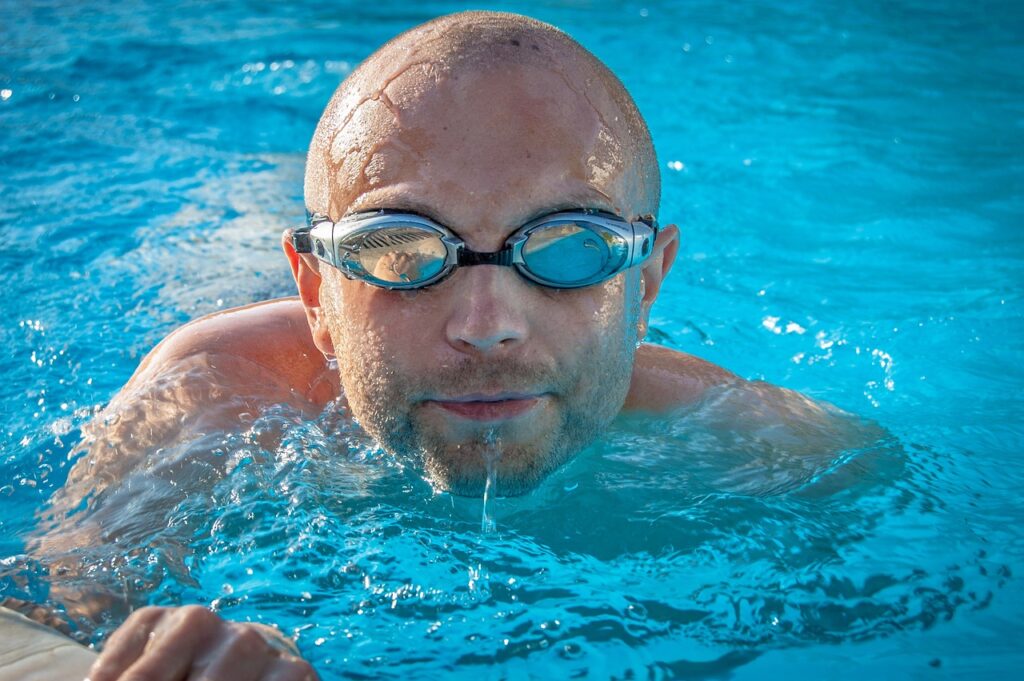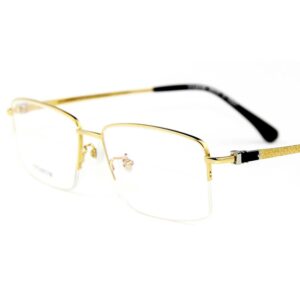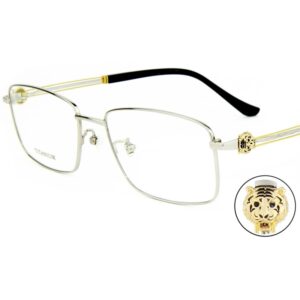Finding the right designer for your eyewear collection can be a daunting task. Whether you’re launching a new brand or expanding an existing one, having a designer who understands your vision is crucial for success. Without the right designer, your brand might struggle to establish its identity and appeal to your target audience.
The eyewear industry is highly competitive, and having unique, well-designed products can be the difference between success and failure. The challenge is not just finding a designer, but finding one who aligns with your brand’s vision, has the necessary experience, and can translate ideas into marketable products. How can you ensure that your company hires the best eyewear designer?
From leveraging your network to posting on specialized job boards, we’ve summarized 7 effective strategies to help you find the right designer for your eyewear collection. Get ready; your designs are about to go from sketches on paper to the eyewear everyone wants to wear.
What Does an Eyewear Designer Do?
An eyewear designer specializes in creating innovative designs for eyeglasses and sunglasses. They develop concepts, create detailed sketches, and work closely with manufacturers to bring these designs to life. Eyewear designers often focus on a specific market segment, staying up-to-date with trends and technological advancements in lens and frame materials. With the right designer, your brand can offer stylish, functional, and high-quality products that stand out in the market.
7 Effective Strategies to Find a Designer for Your Eyewear Collection
1. Define Your Design Needs and Goals

To find the right designer for your eyewear collection, you must first determine exactly what you are looking for. Ask yourself a few key questions:
- What style does your target customer prefer? Are you aiming for luxury, casual, or perhaps eco-friendly eyewear?
- What services do you need? If you only need help with sketches or pattern creation, a student or emerging designer might be the best fit. For manufacturing and production, look for someone with industry experience.
- What is your budget? The complexity of the design and the experience level of the designer will affect the cost. Be prepared to pay between $50 to $100 per hour for an experienced freelance eyewear designer.
- Do you want an employee or a contractor? Hiring a full-time eyewear designer can offer more control but also comes with more responsibility. Contractors provide more flexibility and less overhead but with reduced direct control.
Once you’ve clarified your needs and goals, finding a designer who shares your vision will be much easier. Consider websites like Behance, Dribbble, or The Dots to browse portfolios and find candidates. Identify designers whose style matches your brand and reach out to them. Before finalizing any agreements, ensure you both agree on the project details.
With careful planning, you’ll find a designer eager to bring your eyewear dreams to life! Stay organized, keep an open mind, and be willing to compromise for a successful collaboration and stunning results.
2. Search Online Design Marketplaces

Nowadays, searching for freelancers online is one of the simplest ways to find a designer. Platforms like Upwork and Fiverr connect you with talented designers from around the world who can develop customized eyewear designs at competitive rates.
On these sites, you can browse designer profiles, view samples of their work, read customer reviews, and compare prices. Many designers offer basic packages for sketches or digital designs starting at under $100. For fully customized patterns or prototypes, prices will vary, but expect to pay several hundred dollars.
The key is to look for designers who specialize in the type of eyewear you want to create, whether it’s optical frames, sunglasses, or specialty lenses. Ensure they have experience designing from scratch and working with clients remotely. Don’t hesitate to interview a few different designers before making your selection. Ask about their process for delivering final designs, their design methodology, and their turnaround times.
By using online marketplaces, you can easily and risk-free find designers from around the globe and collaborate with them. And who knows? You might discover an emerging designer with a style that you absolutely love! With the right match, you’ll be on your way to bringing your dream designs to life.
3. Attend Industry Events and Network

Attending industry events such as trade shows, conferences, and networking meetups is a great way to connect with designers and find potential partners for your eyewear collection.
Meet and Greet
At these events, make an effort to introduce yourself to designers whose style you admire. Compliment their work and explain that you’re looking for someone to create eyewear designs. Ask if they’re open to discussing potential collaborations or projects. The worst that can happen is they say no, but by putting yourself out there, you increase your chances of finding an eyewear designer interested in working with you.
Build Connections
Try to establish a genuine connection with the designers you meet by showing interest in their work. Ask about their design aesthetic, experience, and typical clients. Look for designers with experience in creating the type of eyewear you want. Personal connections can make them more willing to work with you on your project.
Follow Up
If you meet any promising designers, follow up within a week to express your interest in collaborating. Reference your conversation and reiterate why you think they would be a great fit for your project. Ask if they’re open to an initial consultation to explore the possibility of working together. Persistence pays off, and attending industry events can lead you directly to a talented designer eager to bring your eyewear designs to life.
4. Explore Design Schools

Connecting with design schools is one of the best ways to discover emerging eyewear designers. At these institutions, students are honing their skills and building portfolios. Reach out to the heads of departments at local design schools or colleges and ask if they have students interested in freelance work or internships. Here are some strategies to explore:
- Attend school fashion shows and student showcases. This allows you to see students’ work firsthand and possibly meet designers who fit your requirements.
- Post internships or job openings on the school’s career boards. Students may jump at the chance to gain real-world experience.
- Engage with students at school social events to start conversations, express your interest in collaborating with emerging designers, and exchange contact information.
- Review student portfolios on the school’s website and directly contact those who impress you.
Building relationships with emerging designers early in their careers is a win-win. You gain access to fresh talent and enthusiasm, while students acquire valuable experience that helps them launch their careers. As these designers grow and succeed, they may become highly sought-after, so getting involved from the start can establish a long-term, mutually beneficial partnership.
5. Leverage Your Brand Identity

One of the most important aspects of brand identity is your logo, which can also be a powerful tool for boosting brand awareness. Your custom eyewear designer can turn your logo into a mobile advertisement by incorporating it into the designs.
To create more engaging designs, consider using brand elements. If your logo is quite simple, add a slogan or other text that describes your brand’s mission or what you sell.
6. Ask Business Contacts for Recommendations

You’ve already established connections with photographers, models, fashion bloggers, and graphic designers in complementary fields. Reach out to them and ask if they have designers they frequently collaborate with and highly recommend. Explain that you’re seeking help to create initial designs for a new eyewear collection.
Your contacts want to see you succeed, so they’re likely to recommend designers they’ve had good experiences working with. However, be sure to ask follow-up questions about the designer’s style, availability, rates, and typical turnaround times to ensure they meet your needs. You can also request to see samples of the designer’s work to get a sense of their aesthetic.
Once you’ve received some promising recommendations, contact the designers and set up calls to discuss the project in more detail. Be prepared with your brand vision, images of your target customers, and some preliminary sketches or ideas. See if you feel a connection with the designer and if your visions align. Ask if they’d be willing to create 3-5 sample designs as a trial to start. If all goes well, you’ve found a designer eager to bring your eyewear designs to life!
Leveraging business contacts is an ideal way to find a designer. You’ll receive recommendations from people familiar with your style and needs. The designers come pre-vetted, so you can start a new collaboration with more confidence. With the right match, you’ll have a designer willing to work with you as your business grows. Tap into your network and don’t hesitate to ask for help. The rewards of finding the perfect designer will be well worth it!
7. Collaborate with Artists

Collaborating with artists is a great way to bring your eyewear designs to life. Many artists work as freelancers or on commission, so you can find one whose style matches your vision.
Look for artists on sites like Dribbble, Behance, and DeviantArt. Browse their portfolios to find someone whose work resonates with you. When you reach out, be prepared to share detailed information about your design concept, target audience, and budget. Ask if they work as freelancers or on commission and if they have experience with eyewear design.
Once you’ve found an artist you’d like to collaborate with, schedule a time to discuss the details. Explain your concept thoroughly, including any sketches, images, color schemes, or other materials that will help them understand. Be open to their input, as they are the experts in translating concepts into visuals.
Before starting work, sign a contract outlining the timeline, number of revisions allowed, and payment schedule. For larger, more complex projects, you may need to pay a portion upfront. Ensure you understand the file formats you’ll receive for the final designs to have everything you need for production.
Collaborating with artists requires trust and communication to achieve the results you want. Respect their creative process while providing constructive feedback. With an open mind, you may end up with designs that far exceed your initial concept. The key is finding an artist who, like you, is passionate about bringing innovative eyewear to the world.
Conclusion
How do you find an eyewear designer? You now have several reliable strategies to find the perfect designer for your eyewear brand. Start putting these tips into practice, and be ready to see your creative vision come to life. Before you know it, you’ll have sketches, prototypes, and samples to share with the world.
Finding the right designer is crucial, so take your time and don’t settle. Your eyewear brand deserves the best creative talent to make it shine. Now, go out, network, search online, and leverage your contacts. The perfect designer for your eyewear collection is out there, ready to help you make a lasting impact in the industry.
Frequently Asked Questions (FAQ) – Finding a Designer for Your Eyewear Collection
1. Why is it important to hire a specialized eyewear designer?
Hiring a specialized eyewear designer is crucial because they understand the unique requirements of eyewear, including functionality, comfort, and style. A designer with experience in the eyewear industry can create designs that not only look great but also meet technical specifications for manufacturing, ensuring that the final product is both stylish and practical.
2. Where can I find experienced eyewear designers?
You can find experienced eyewear designers through various platforms:
- Online Marketplaces: Websites like Upwork, Fiverr, and Behance allow you to browse profiles and portfolios of freelance designers.
- Design Schools: Reaching out to fashion and design schools can connect you with emerging talent eager to build their portfolios.
- Industry Events: Trade shows and conferences are excellent places to meet and network with potential designers.
- Referrals: Asking for recommendations from business contacts in related industries can lead you to reliable designers.
3. What should I consider when choosing an eyewear designer?
When choosing an eyewear designer, consider the following:
- Experience: Look for designers who have a proven track record in the eyewear industry.
- Style Compatibility: Ensure their design aesthetic aligns with your brand’s vision.
- Technical Knowledge: The designer should understand eyewear manufacturing processes and materials.
- Budget: Make sure their rates are within your budget while considering the value they bring to the project.
4. How much does it cost to hire an eyewear designer?
The cost of hiring an eyewear designer can vary widely depending on their experience, the complexity of the designs, and the scope of work. Freelance designers typically charge between $50 to $100 per hour, but rates can go higher for top-tier talent. For a full collection, expect to budget several thousand dollars.
5. Can I hire a designer for a single project or do I need to commit long-term?
You can hire a designer for a single project or on a long-term basis, depending on your needs. Freelance designers often work on a project-by-project basis, offering flexibility. If you require ongoing design work or want to maintain consistency across multiple collections, you may consider a long-term or full-time arrangement.
6. What should I include in a design brief for an eyewear project?
A comprehensive design brief should include:
- Brand Overview: Information about your brand’s vision, target market, and style preferences.
- Design Requirements: Specific details about the types of eyewear, materials, colors, and features you want.
- Technical Specifications: Any technical requirements related to manufacturing, fit, or compliance standards.
- Budget and Timeline: Clear information on your budget constraints and project deadlines.
7. How can I ensure the quality of the designs?
To ensure the quality of the designs:
- Portfolio Review: Carefully review the designer’s past work to assess their skill and style.
- Sample Development: Request sample designs or prototypes before finalizing the entire collection.
- Clear Communication: Maintain open and clear communication throughout the design process to align expectations.
- Feedback Loop: Provide constructive feedback and ask for revisions if necessary to achieve the desired outcome.
8. What are the next steps after selecting a designer?
After selecting a designer, the next steps include:
- Contract Agreement: Draft and sign a contract outlining the scope of work, deadlines, payment terms, and deliverables.
- Kickoff Meeting: Hold a meeting to discuss the project in detail, share your design brief, and set expectations.
- Design Process: Begin the design process with regular check-ins to review progress and provide feedback.
- Final Review and Approval: Once the designs are complete, conduct a final review before approving them for production.
























